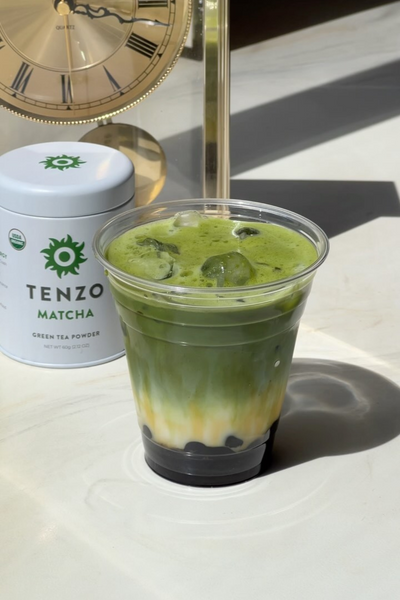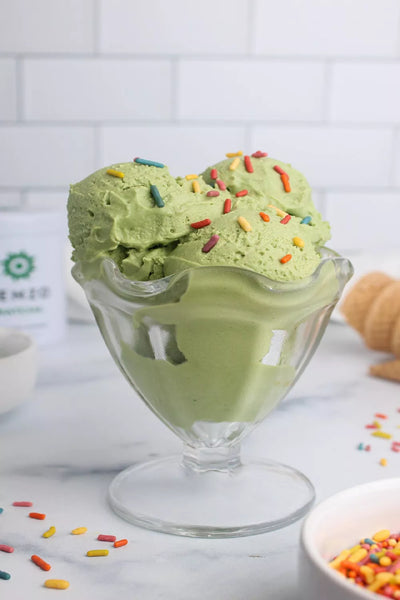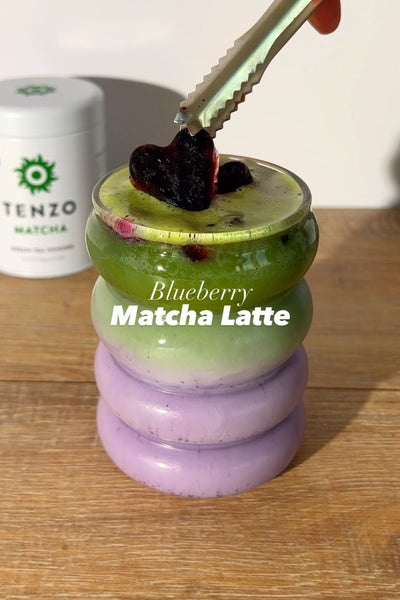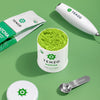Caffeine in Tea vs. Coffee: The Best Way To Feel Energized

Coffee and tea are ubiquitous pick-me-ups everywhere in the world, and they both serve the same purpose. Coffee and tea contain caffeine and antioxidants. They’re meant to energize you, helping you kickstart your morning or pick yourself up in the afternoon.
While they both naturally contain caffeine, they don’t have much else in common. In fact, coffee and tea work very differently to put the pep in your step. They both boast plenty of benefits, but one may suit your lifestyle a little better than the other.
The Different Kinds of Coffee
There are two main kinds of coffee: arabica and robusta. Almost all the coffee you encounter in the wild will be arabica coffee. Robusta coffee contains almost twice the amount of caffeine as arabica, and that’s precisely why so many people don’t like the taste. It carries a strong, bitter flavor that makes the coffee less enjoyable.
Think of the difference between a bar of dark chocolate and 100% cacao. That’s an accurate way to compare arabica and robusta -- almost nobody eats a 100% cacao bar like it’s candy, and almost nobody drinks plain robusta.
Arabica coffee can be made into dozens of specialty drinks, but the coffee will always be prepared in one of two ways. There’s drip coffee, which is what your home coffee pot makes. Then there’s espresso, which is a highly concentrated form of coffee.
The biggest difference between these two ways to make coffee is the concentration of caffeine. A serving of coffee is technically 6 ounces, but the standard coffee cup is made to hold 12 ounces, so realistically, 12 ounces is what you’re probably drinking. A 12-ounce cup of coffee provides you with approximately 240mg of caffeine.
A serving of espresso is technically one ounce, but this amount is very small. Many home espresso makers will produce a 2-ounce shot. Two ounces of espresso contains about 120 mg of caffeine. If you prefer to drink your coffee as a quick espresso shot, you’re getting less caffeine than you would get from a standard cup of coffee.
If you’re using the espresso to make a latte or a coffee drink, you’re more than likely doubling up the shots to increase the volume of the coffee. This is what most major coffee chains do. Lattes aren’t generally made with regular coffee, but two shots of espresso. The more realistic caffeine content is 240 mg per serving, making it the same as coffee.
The Different Kinds of Tea
Black tea, green tea, and white tea are all the exact same kind of tea. The color depends on when the leaves are harvested. If you’re new to tea, this might sound confusing. An analogy might help—tea works the same way that bell peppers work. Green, yellow, orange, and red bell peppers are all the exact same pepper. They’re picked at different levels of ripeness, and they have different flavors at every stage.
Black tea leaves are ripened tea leaves that have been allowed to oxidize. This oxidization process is what gives black tea its dark color and rich flavor. Green and white tea leaves have not been oxidized, which gives them lighter and more floral flavor profiles.
Assessing the caffeine content of tea isn't easy. It can vary widely depending on the variety of the tea or even the way the tea is prepared. A standard serving of black tea can contain as little as 45 mg or as much as 90 mg for the exact same amount of tea. How long the tea is allowed to steep plays a role in its caffeine content. Allowing it to steep for a few minutes will bolden the flavor and increase the caffeine content.
It’s much easier to predict and measure the caffeine content of matcha green tea. Matcha is finely powdered young green tea leaves. You’re consuming all of the tea instead of steeping it, removing the unpredictability from the equation. Each serving of matcha green tea will reliably provide the same amount of caffeine.
Matcha green tea is the middle of the line as far as tea goes. A typical serving will contain anywhere between 30 mg and 40 mg of caffeine per serving. Just like with coffee, increasing your serving size will increase the amount of caffeine in your cup.
What Are The Effects of Caffeine?
Caffeine is a stimulant that naturally occurs in coffee, tea, and raw chocolate. Caffeine impacts your brain by blocking a naturally occurring neurotransmitter called adenosine, which puts you in a relaxed or tired state. Caffeine connects to adenosine’s receptors, and it actually doesn’t do anything. It simply blocks adenosine, preventing it from making you feel tired.
Caffeine can increase the activity of norepinephrine and dopamine in your brain, boosting your alertness and improving your focus.
It’s the combination of these two effects that cause the caffeine boost. It can help to get you started in the morning and pick you back up after lunchtime when the adenosine starts to return in your brain and lull you into a slump. That’s the reason that caffeinated beverages are not nighttime drinks. You want your adenosine to go up and your alertness to go down around bedtime.
Caffeine has also been linked to a modest increase in metabolism. It won’t be enough to help you shed pounds without proper diet and exercise, but every little bit counts as a part of your overall wellness strategy.
On the other side of the same coin, some people feel that the effects of caffeine make them feel jittery or make them “crash” once the caffeine stops working. Everyone reacts to caffeine differently. If you’re sensitive to caffeine but want to experience its benefits, you may want to start at smaller amounts to see what you can tolerate.
Which One Provides a Bigger Energy Boost?
Coffee and tea contain more than just caffeine. While the caffeine in both can boost your energy levels, other compounds can work in the background to provide benefits to your body.
A Look at Tea
Matcha green tea is one of the most beneficial forms of tea. Unlike other teas, matcha doesn’t come in a bag. You don’t steep it. You mix the powder into the water and consume the entire tea leaf, allowing you to obtain all of the benefits from the tea.
Matcha is very high in antioxidants called catechins. These antioxidants can help to protect the cells in your body from damage by free radicals. They can also help to support a healthy metabolism, giving you a bigger kick of naturally occurring energy.
While matcha has ⅓ the caffeine of the average cup of coffee, it makes up for it with its catechins. Caffeine-sensitive people may find that matcha contains just enough caffeine to get them going, while the increased metabolic activity from the catechins gives them a nice boost of natural energy to get them through the day.
A Look at Coffee
Coffee contains more caffeine than matcha, which makes the effects of the caffeine more noticeable. Coffee does not contain the valuable metabolism-boosting catechins that matcha contains, but it does boast plenty of other benefits such as providing a healthy dose of antioxidants and helping to maintain healthy blood sugar levels.
Which One Is Better?
Coffee and matcha are both good for you. They’re just good for you in different ways. There’s no reason why you couldn’t enjoy a cup of both each day. If boosting your energy levels is your top priority, you might want to make the switch from coffee to matcha. Matcha is able to offer your body more of what it needs to naturally sustain healthy energy levels, whereas coffee provides benefits in different ways.
Give Matcha a Shot
Even if you’re a loyal coffee devotee, matcha can still play a role in keeping you energized. Try drinking coffee in the morning and matcha in the afternoon if you want to experience the benefits of both.
You can use Tenzo’s Organic Matcha Tea the same way you would use coffee. You can enjoy it hot or iced. You can make a latte with matcha or serve it straight up. You can even cook with matcha powder to add delicious green tea flavor to your favorite treats. White chocolate matcha dipped strawberries are a great way to enjoy fresh fruit while experiencing the benefits of matcha.
Sources:
Adenosine - an overview | Science Direct
7 Proven Health Benefits of Matcha Tea | Healthline
13 Health Benefits of Coffee, Based on Science | Healthline
9 Reasons Why (the Right Amount of) Coffee Is Good for You | Hopkins Medicine










